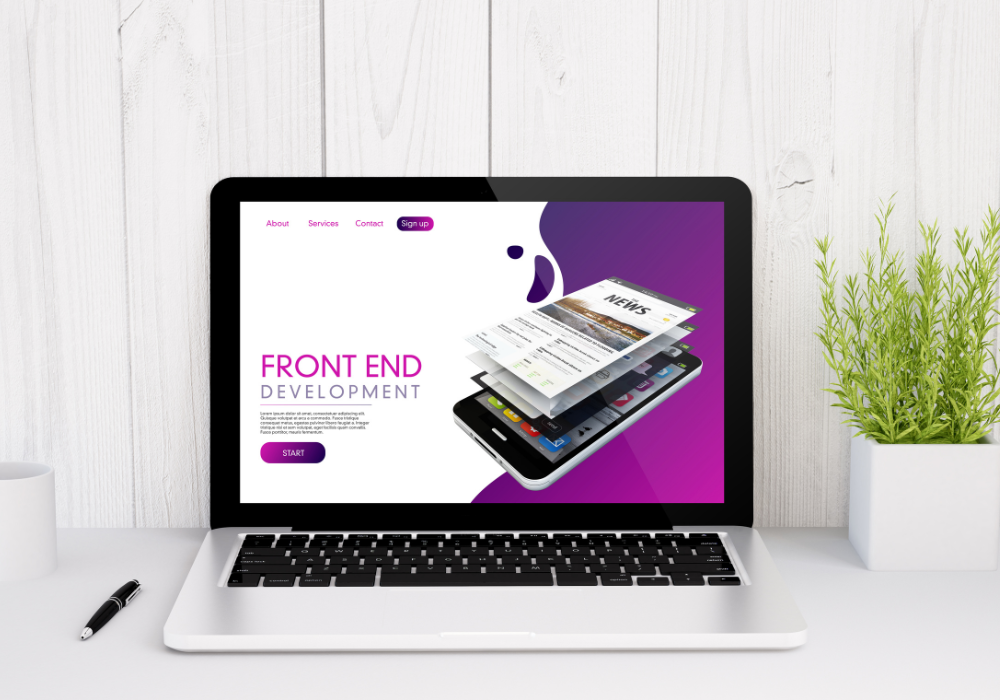The front end, the vibrant, interactive face of a website or web application, is where user experience takes center stage. As a frontend developer, you’ll be responsible for crafting engaging interfaces, breathing life into designs, and ensuring seamless user interactions. But where do you begin your journey in this exciting field? Fear not, aspiring developers! This roadmap equips you with the essential skills and technologies to embark on a thriving front-end development career.
The Building Blocks (Fundamentals)
- HTML (HyperText Markup Language): The foundation of every web page, HTML provides the structure and content layout. Mastering HTML syntax empowers you to create basic web pages and understand the core of web development.
- CSS (Cascading Style Sheets): CSS adds style and visual flair to your HTML structures. Learn to manipulate layouts, colors, fonts, and animations with CSS to bring your web pages to life.
- JavaScript: The interactive force behind the front end, JavaScript adds dynamic behavior to web pages. Learn core JavaScript concepts like variables, functions, loops, and DOM manipulation to create responsive and user-friendly experiences.
Beyond the Basics: Enhance Your Skills
- Preprocessors: Preprocessors like SASS extend the capabilities of CSS. Learn SASS to write cleaner, more maintainable CSS code with variables, mixins, and nesting functionalities.
- TypeScript for JavaScript: Take your JavaScript game to the next level with TypeScript. TypeScript adds optional static typing to JavaScript, improving code readability, catching errors early in development, and offering better IDE support.
Libraries and Frameworks: Build Like a Pro
- Explore Frameworks: Frontend development frameworks like Angular, Vue.js, and React provide pre-built structures and functionalities to expedite development. These powerful tools streamline common tasks and enable you to focus on building complex UIs efficiently. Choose a framework that aligns with your project needs and interests, and delve into its specifics.
Use Version Control to keep track and collaborate with teams
- Git: This essential version control system (VCS) allows you to track changes in your codebase, revert to previous versions, and collaborate effectively with other developers. Master Git commands to become a version control pro.
Use testing frameworks to ensure quality
- Vitest/Jest: Testing is paramount for robust front-end applications. Testing frameworks like Vitest and Jest enable you to write unit and integration tests, ensuring your code functions as expected and preventing regressions.
Task Runners to Automate Repetitive Tasks
- Gulp.js: Streamline your development workflow with task runners like Gulp.js. Automate repetitive tasks such as minifying code, compiling Sass, and running tests, freeing up your time to focus on core development.
- Grunt: Grunt is another popular task runner that uses a JavaScript configuration file to define tasks. It boasts a vast ecosystem of plugins, making it highly customizable. Here's an equivalent Grunt task for compiling Sass:
Code Engines to Enhance Your Workflow (Optional)
- Pug.js (formerly Jade): This templating engine offers a concise syntax for writing HTML. While not essential, Pug.js can improve code readability and maintainability for complex HTML structures.
- Astro: Astro is a full-stack web framework that utilizes a code engine for a unique approach to development. It allows you to write components using a mix of HTML, CSS, and JavaScript, all within a single file. Astro then intelligently processes these files, optimizing them for performance and generating the final production-ready code.
- SvelteKit: SvelteKit is a framework for building web applications with Svelte. It incorporates a code engine that analyzes your Svelte components and generates statically rendered outputs. This not only improves website performance but also simplifies deployment and enhances SEO.
In conclusion, forge your path in the Thriving Front-End Frontier
The front-end development landscape is constantly evolving, offering a stimulating and rewarding career path. This roadmap has equipped you with the foundational knowledge and tools to embark on your front-end development journey. Remember, the key to success lies in continuous learning and exploration. Here are some additional tips to propel you forward:
- Fuel your Passion: Stay curious, experiment with new technologies, and actively engage with the vibrant front-end development community.
- Practice Makes Perfect: Solidify your skills by building personal projects, contributing to open-source projects, and participating in coding challenges.
- Embrace Continuous Learning: The front-end landscape is ever-changing. Dedicating time to learning new frameworks, libraries, and best practices ensures you stay relevant and competitive.
- Build Your Portfolio: Showcase your skills and creativity by building a captivating portfolio website that highlights your projects and accomplishments.
- Network and Connect: Build relationships with other developers, attend meetups and conferences, and actively participate in online forums.
With dedication, perseverance, and a thirst for knowledge, you can transform this roadmap into a springboard for a thriving front-end development career. So, unleash your creativity, embrace the challenges, and start building the future of the web!

Add a comment